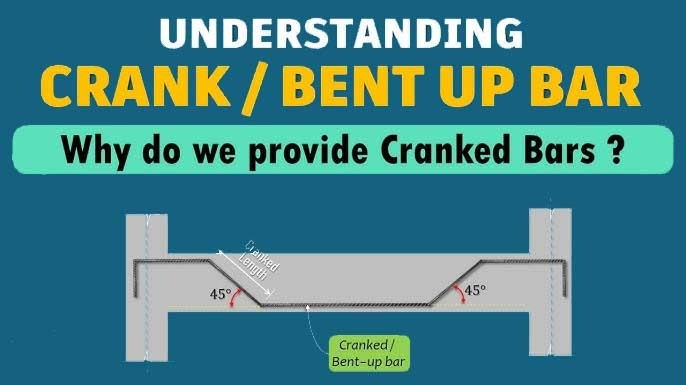
Why Are Crank Bars Essential in Slab, Beams, and Columns?
Engr Waseem Raja
Prof. Civil Engineer | Certified Autodesk Designer | Youtuber | Blogger
When it comes to reinforced concrete structures, providing crank bars in slab beams and columns is crucial for both strength and durability. Whether you're an aspiring civil engineer or a construction enthusiast, understanding the importance of crank bars can help you appreciate the intricacies of modern construction.
So, why are crank bars used exactly? Let’s dive in. ??
??? What Are Crank Bars?
Crank bars (also called bent-up bars) are reinforcement bars that are bent at certain angles, typically at 45° or 30°, to achieve better structural performance. These bars are essential for handling tensile forces, particularly in slabs and beams, where bending moments and shear forces are significant.
?? Why Crank Bars Are Provided?
Slabs and beams are subject to both bending moments and shear forces . The bottom of the beam experiences the most tensile stress, while the top portion typically handles compressive forces. Cranking the bars helps shift some reinforcement from the bottom to the top, where the slab or beam requires added tensile strength to resist shear. This helps improve the structure's overall stability.
When crank bars are bent at specific angles, they help distribute load stresses more efficiently across the slab or beam. This distribution prevents cracks and reduces the chances of structural failure, especially in areas of high load concentration.
Crank bars improve the bonding between the concrete and steel, creating stronger anchorage points. This ensures that the steel reinforcement is firmly embedded in the concrete, providing greater resistance to both bending and shear forces. This enhanced bond prevents slippage, especially in high-stress areas.
Using crank bars is a cost-effective method to achieve optimal reinforcement. By strategically bending the bars instead of adding more steel, structural engineers can ensure the same level of strength with fewer materials, reducing construction costs without compromising safety.
?? Where Are Crank Bars Used?
领英推荐
Crank bars are placed in two-way slabs to handle both positive and negative bending moments. These bent-up bars ensure that the slab can handle stresses over long spans without excessive deflection or cracking.
In beams, crank bars are provided at supports where shear forces are high. This reinforcement improves the strength and rigidity of the beam, allowing it to support heavier loads without buckling.
In columns, crank bars are used to resist lateral forces, particularly those caused by wind loads or seismic activity. The bars help enhance the column's resistance to shear, ensuring the building's stability under horizontal forces.
?? Key Takeaways
?? Pro Tip for Civil Engineers: Always ensure that crank bars are placed at the right angles and locations within the structure, especially at points of high shear or bending. This simple step can significantly improve the durability of the structure. ??
Crank bars may seem like just a small detail, but in construction, it’s these small yet impactful reinforcements that create long-lasting and resilient structures. So next time you walk by a towering skyscraper or an elegant bridge, remember—the hidden strength lies in the clever engineering of reinforcement! ?????
#CivilEngineering #CrankBars #StructuralReinforcement #ConstructionInnovation #Engineering #Construction
Read More: